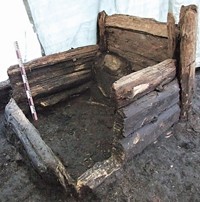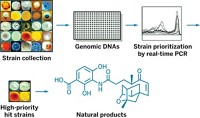Advertisement
Grab your lab coat. Let's get started
Welcome!
Welcome!
Create an account below to get 6 C&EN articles per month, receive newsletters and more - all free.
It seems this is your first time logging in online. Please enter the following information to continue.
As an ACS member you automatically get access to this site. All we need is few more details to create your reading experience.
Not you? Sign in with a different account.
Not you? Sign in with a different account.
ERROR 1
ERROR 1
ERROR 2
ERROR 2
ERROR 2
ERROR 2
ERROR 2
Password and Confirm password must match.
If you have an ACS member number, please enter it here so we can link this account to your membership. (optional)
ERROR 2
ACS values your privacy. By submitting your information, you are gaining access to C&EN and subscribing to our weekly newsletter. We use the information you provide to make your reading experience better, and we will never sell your data to third party members.
Natural Products
Scientists construct new molecules from really old teeth
Bacterial DNA from Neanderthal mouths leads to natural products from ancient sources
by Leigh Krietsch Boerner
May 7, 2023
| A version of this story appeared in
Volume 101, Issue 15
A group of researchers has synthesized a never-before-seen natural product found by scraping crusted gunk from Neanderthal teeth. An international team led by Pierre Stallforth from the Hans Knöll Institute and Christina Warinner of the Max Planck Institute for Evolutionary Anthropology mined calcified dental plaque for DNA fragments, pieced these bits together to reconstruct ancient bacterial genes, and then synthesized a pair of small molecules called paleofurans (Science 2023, DOI: 10.1126/science.adf5300). This is the first time scientists have reassembled and then used ancient DNA as a blueprint to synthesize natural products. The method not only shows how bacteria swam through Paleolithic mouths but also opens up the search for potentially useful natural products to billions of years of history.
Natural products are potential sources of new antibiotics and other drugs. But scientists have been limited to searching sources living in the current time. “We’re adding a time dimension to natural product chemistry,” Stallforth says. “We’re now free in time to go back,” he says. The team, a combined effort from the Leibniz Institute for Natural Product Research and Infection Biology, the Max Planck Institute for Evolutionary Anthropology, and Harvard University, fished out two similar compounds, called paleofuran A and paleofuran B. These natural products are metabolites of a previously unknown variety of Chlorobium, a green sulfur bacterium that typically lives in lakes and ponds.
This was a surprise, Stallforth says, because these are photosynthetic bacteria, which need light to grow. “They’re not part of what you typically find in the mouth,” he says. “But we found them in quite a large amount.” The bacteria may have slipped into Neanderthals’ mouths during their lifetimes or just before burial, potentially through drinking water, Stallforth says.
The team collected and compared bacterial DNA from the fossilized tooth tartar of 12 Neanderthals, 34 humans from archaeological sites, and 18 modern-day humans. They linked up the fragments of ancient DNA into pieces long enough to find genes. Then the researchers ultimately pieced together a metagenome of assembled genomes with the help of bioinformatic tools. “It’s one genome assembled out of a mixture of genomes,” Stallforth says. “In the oral cavity, there is not a single [species of] bacterium. There’s a whole plethora of bacteria,” he says. This means that the team had to pick apart not just the Chlorobium bacterial genome but a tangle of genomes from different bacteria. The team used both organic and gene synthesis to make the paleofurans. The molecules are simple, requiring only two steps for the total synthesis. “Is this the next miracle drug? No, probably not,” Stallforth says. But the method shows that scientists can access new structures from bacteria that grew as much as 100,000 years ago.
“The overall procedure, assembling lots of short sequences into informative longer sequences, sounds simple, but it is technically extremely challenging,” says Jon Clardy, a biochemist at Harvard University. This method’s success makes it easier to mine ancient sources for potentially useful molecules, he says.
In the future, the team wants to access more complicated molecules with new biological activities, Stallforth says. “But to do that, we had to show that it’s possible.”




Join the conversation
Contact the reporter
Submit a Letter to the Editor for publication
Engage with us on Twitter